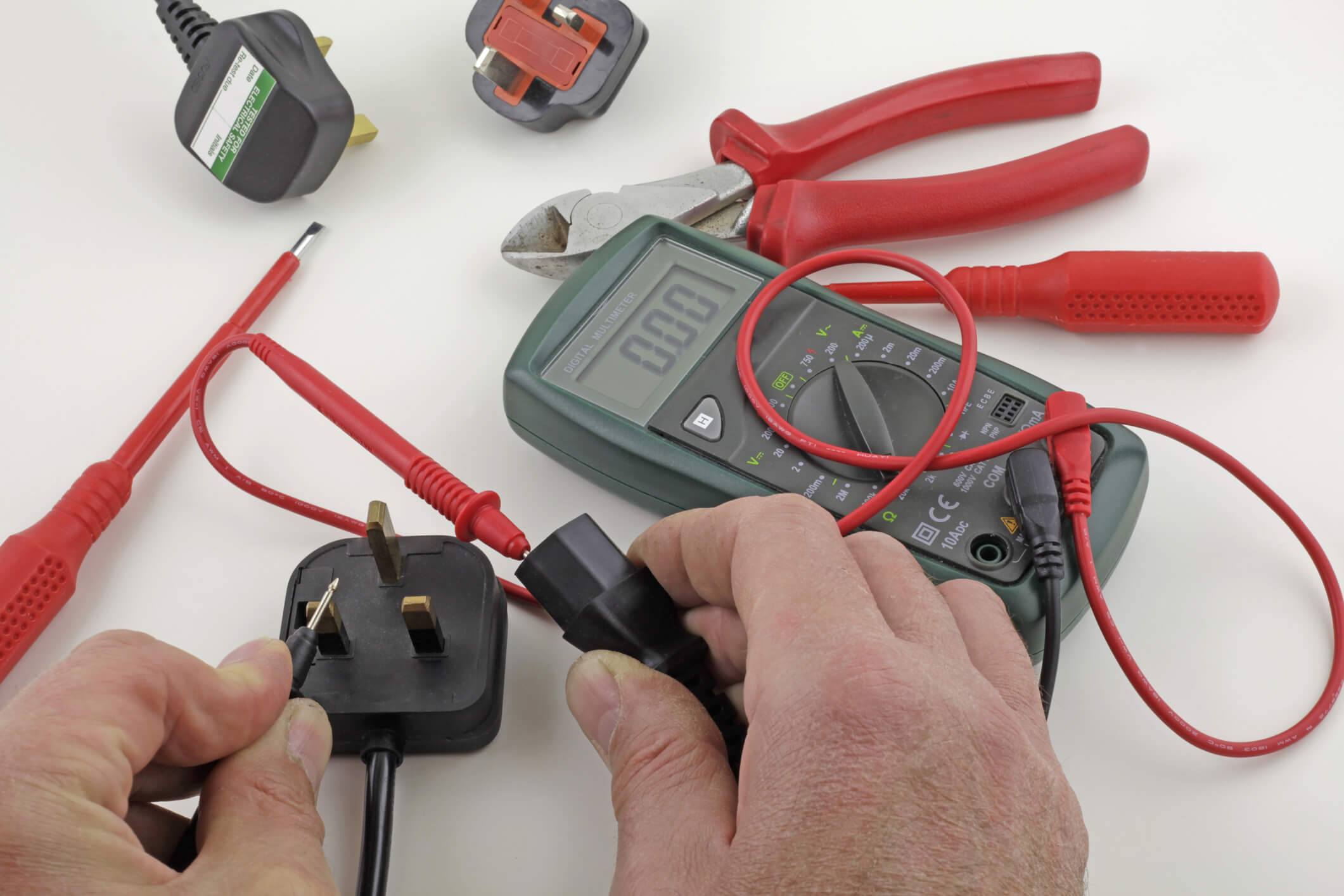20+ Years Experience
Specialist PAT Testing

Are you aware of the latest PAT testing regulations? These regulations ensure the safety of electrical appliances in the workplace and failure to comply can result in hefty fines.
Don’t risk the safety of your employees and the reputation of your business.
There are important regulations in place to ensure the safety of electrical systems in the workplace. These regulations outline the responsibilities of employers to maintain and uphold a safe standard for all electrical equipment and systems.
It is the duty of employers to regularly inspect and test all electrical systems for safety, also known as PAT testing (Portable Appliance Testing).
This process helps to identify any potential electrical faults or hazards. By adhering to these regulations, employers can prioritise the safety of their employees and minimize the risk of electrical accidents in the workplace.
Health and Safety at Work Act 1974 sets out the legal framework for ensuring the health, safety, and welfare of employees in the workplace.
It places responsibilities on employers to provide a safe and healthy working environment, including the need to comply with safety standards and regulations.
This act also imposes responsibilities on employees to cooperate with their employers to maintain a safe workplace and to use any provided safety equipment correctly.
By following the guidelines of the Health and Safety at Work Act 1974, employers and employees can work together to fulfil their responsibilities and create a safe and secure working environment for all.
PUWER (Provision and Use of Work Equipment Regulations) is a set of regulations that aim to ensure the safe and proper use of work equipment.
These regulations require employers to take measures to prevent or control risks associated with the use of equipment. PUWER covers a wide range of equipment, including machinery, tools, and appliances.
It places responsibilities on both employers and employees to ensure that equipment is suitable for its intended use, properly maintained, and used correctly.
PUWER works in conjunction with other regulations, such as the Management Of Health And Safety At Work Regulations 1999, to ensure a comprehensive approach to workplace safety.
Visual inspection is a crucial aspect of PAT testing regulations that aim to ensure the safety of electrical systems. Here are the steps involved in a thorough visual inspection:
(PAT) is crucial to ensure the safety of electrical equipment in various settings. When conducting PAT testing, follow these steps:
By following these steps, you can effectively conduct portable appliance testing and ensure the safety of electrical equipment.
When it comes to combined inspection and testing for PAT testing regulations, there are several steps you must follow to ensure compliance and safety.
By following these steps, you can ensure that combined inspection and testing is carried out effectively and in accordance with PAT testing regulations.
Class I equipment refers to electrical devices that have an exposed metal casing, which could potentially cause electric shocks if not properly grounded. These devices include power tools, refrigerators, and washing machines.
In order to comply with PAT testing regulations, it is crucial to thoroughly test class I equipment for electrical safety. This involves checking for insulation resistance, earth continuity, and polarity.
Neglecting to adhere to these regulations can result in serious accidents or even fatalities.
It is of utmost importance for businesses and individuals to prioritise the safety of their electrical equipment to prevent any potential hazards.
Class II equipment, also known as double insulated or reinforced insulation equipment, eliminates the need for an earth connection and provides an extra level of protection against electric shock.
This type of electrical device is marked with the symbol of two squares inside a larger square and is commonly used in various settings such as laptops, televisions, and power tools.
It is crucial to properly test and maintain Class II equipment to ensure its safety and compliance with PAT testing regulations.
When it comes to PAT testing regulations, it is crucial to prioritise the testing of stationary equipment. This category includes items such as desktop computers, printers, and fixed machinery.
Regular testing is essential for ensuring the safety of both employees and customers.
To comply with regulations, it is important to conduct visual inspections and electrical tests on all stationary equipment. This helps to identify any potential faults or defects that could pose electrical hazards.
By following these regulations, businesses can create a safe working environment and prevent accidents or injuries.
It is highly recommended to maintain a log of all PAT tests conducted and their results for proper documentation.
Regular training and awareness programs for employees can also aid in understanding and adhering to PAT testing regulations.
PAT testing is not a legal requirement for all industries. While it is highly recommended for safety purposes, it is not explicitly required by law.
PAT testing is carried out to check the safety of electrical appliances and prevent any potential electrical malfunctions that may pose a risk to employees in the workplace.
Employers have a responsibility to ensure that their employees are aware of the risks involved in PAT testing and are competent to carry out the tests safely.
The HSE is responsible for setting and maintaining safety standards for businesses in the UK and expects that PAT testing will be routinely done on all relevant appliances.
They may issue fines or take legal action against businesses that do not comply with these regulations.
Any appliance that is not part of a fixed installation and uses a plug, socket, or flexible cable to get power is considered a portable appliance and should undergo PAT testing.
This includes appliances in five main categories: Class 1, Class 2, Extension Leads, IT Equipment, and Stationary and Movable Equipment.
We Aim To Reply To All Enquiries With-in 24-Hours